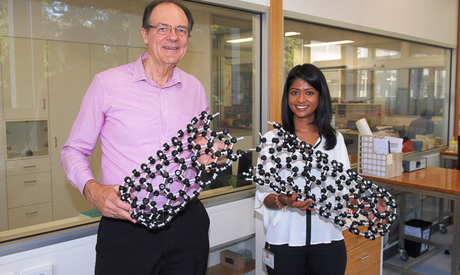CNT slicing device to revolutionise electronics

An Australian invention, the Vortex Fluidic Device (VFD), is being adapted to precisely cut through carbon nanotubes (CNTs) used in solar panel manufacturing and cancer treatment.
Scientists from Flinders University in South Australia have proven the Vortex Fluidic Device’s ability to slice through CNTs with great precision. The scientists last year received an Ig Nobel Prize for creating the VFD and using it to unboil an egg.
Device creator and Flinders University Professor Colin Raston said the CNTs could be commercialised within 12 months.
CNTs are minute cylinders of carbon atoms with mechanical, electrical, thermal, optical and chemical properties. They have applications in many industries, including automotive, energy storage and electronics. CNTs are lighter, more flexible and cheaper than solar cell materials.
“Importantly for this technology is that we have uniformity in products,” Professor Raston said.
“Uniformity in products also means that you can improve the solar cell efficiency in solar cell devices.”
The VFD can be used to slice CNTs accurately to an average length of 170 nm using only water, a solvent and a laser. It is also claimed to be a simpler and cheaper process than previous methods, which resulted in random lengths that made it difficult to deliver drugs to patients and transfer electrons for solar panel manufacturing.
Flinders University PhD student Kasturi Vimalanathan, who played a key role in discovering new applications for the device, said the machine’s ability to cut CNTs to a similar length significantly increased the efficiency of solar cells.
“They shorten the carbon nanotubes to fit in all the chemicals so it can withstand high temperatures,” she said.
“It increases the efficiency and enhances the photoelectric conversion because they can provide a shorter transportation pathway for these electrons.
“It’s a one-step method we can scale up. We can see cheaper solar panels on the back of this development.”
Originally published here.
Soft robot uses magnetic fields to power itself autonomously
Inspired by the movement of manta rays, researchers have developed a small, magnetically powered...
Perovskite 'energy sandwich' could power next-gen solar
Researchers have achieved a new level of control over the atomic structure of halide perovskites,...
Creating the truck of tomorrow
Exploring the technological innovations, infrastructure solutions and emerging delivery methods...





